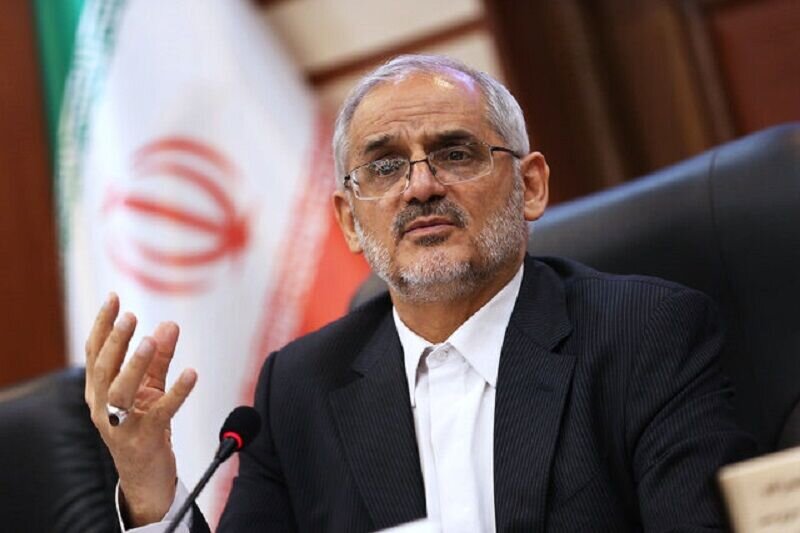Schools set to open Sept. 5 amid pandemic
Health Ministry: 12 high-risk red zone areas declared

TEHRAN- When it comes to opening the schools in Tehran after the summer vacation, this year special considerations have been taken into account due to the coronavirus pandemic. The priority is the safety of students, teachers, and the school staff.
Minister of Education Mohsen Haji Mirzaee, announced that all schools for the new academic year will start September 5 (15 Shahrivar). He said urban and rural schools with high population density will be divided into two groups, with attendance diverted into odd-even days. He added that low-density population areas with lower risk will have a normal routine.
All educational centers in Iran were closed from late February and reopened on May 16, after almost three months of closures in the wake of the pandemic after a TV announcement by the education minister. The schools also ran the final year exams in the third week of May.
President Hassan Rouhani announced plans to reopening mosques simultaneously with schools in areas that have been consistently free of the coronavirus.
In order for students to keep in touch with their studies, the Ministry of Education launched a homegrown mobile application on April 9, called SHAD, providing students with distance learning programs. He added that more than 60 percent of students and 94 percent of teachers attended 64 percent of classes through the SHAD app, whose acronym in Persian translates as the Students Education Network.
Moreover, the Islamic Republic of Iran Broadcasting (IRIB) also began to broadcast televised educational programs on a daily basis after school closures.
“It was necessary to devise a method to enable the students to have an experience of an atmosphere like the classroom in the virtual space, and enable the teachers to have a two-way interaction with their students in the platform of virtual space and handle the question and answer process and the exams just like how they did in the classroom,” Haji-Mirzaie said in a televised program.
The minister underlined that all the schools in the country have received the health protocols and instructions from the Health Ministry which the schools will be obligated to maintain.
The opportunity to implement tele-learning system in Iran has never arisen, either because of lack of the necessary infrastructure or the lack of need for mobile application, Haji-Mirzaie added, noting that his ministry has now turned the coronavirus threat into an opportunity and provided the students with a domestic app in the virtual space after creating the necessary infrastructure and developing the required software.
The initiative has not gone without criticism as low-income families and the vulnerable social groups cannot afford to purchase smartphones and tablets, or many remote cities and villages lack the appropriate infrastructure or internet connectivity.
Worth mentioning is that the breadwinners of many families in Iran have been out of work after the coronavirus outbreak and its economic consequences. Many of those families have more than two schoolchildren, and it is impossible or quite difficult for them to purchase the gadgets to use the SHAD application.
Before the officials decided to restart schools in May, it was decided in April to group regions into three categories due to the coronavirus infection rate: White, yellow and red areas.
The announcement, made by President Rouhani in April as per regulations introduced by the Ministry of Health and Ministry of Education. Various restrictions and regulations relating to the pandemic outbreak will apply to each of the three zones, with red having high infection rates and white lowest.
More than 100 cities fell into the white zone categories, where religious sites could reopen, and congregational and Friday prayers could also be held. Rouhani explained that an area will be declared a white zone where there is no report of new coronavirus cases and deaths for two weeks.
The Health Ministry drew a map to define various color zones according to the criteria of infection rates. The president underscored that the smart social distancing scheme must be strictly observed and that reopening of businesses should not be interpreted as an end to Covid-19 and resumption of normal life.
The Health Ministry declared out of the country’s 31 provinces, 12 are currently considered as high-risk red-zones, including Tehran, Fars, Ardabil, Isfahan, Alborz, South Khorasan, Sistan-Baluchestan, Kohgiluyeh and Boyer-Ahmad, Lorestan, Hamedan, Yazd, Kerman, and North Khorasan.
Rouhani further pointed to a new decision on the mandatory use of face masks and gloves in the subway. By the end of June, wearing face masks became compulsory in the high-risk red zones.
Leave a Comment